Executive changes 7
REMEMBERING POPE FRANCIS
Pope leaves behind a legacy of ‘compassion, inclusivity and humility’

By JULIE MINDA
The Catholic health ministry joined mourners worldwide in grieving the death of Pope Francis on April 21.
Eldercare providers worry about impact of potential cuts to Medicaid
By LISA EISENHAUER
San Vicente de Paúl Nursing Home and Rehabilitation Center in the Bronx is in one of the nation’s poorest areas, with more than one-third of all households living in poverty. All the residents of the ArchCare facility are from minority populations and most of their care is covered by Medicaid.
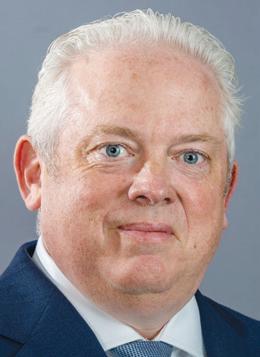
But as Scott LaRue, president and CEO of the continuing care system that spans the Archdiocese of New York, notes, Medicaid reimbursement covers only about 60% of the actual cost of care. “That facility lost $7 million last year,” LaRue says.
Although licensed for 120 beds, San Vicente de Paúl is being downsized to 40.
The 88-year-old pontiff appeared the day before — Easter Sunday — on the balcony of St. Peter’s Basilica before about 50,000 people assembled there for an Easter blessing and took one last ride among the faithful in the popemobile before resting and having a quiet dinner that afternoon and early evening, according to Vatican News. He became suddenly ill around 5:30 a.m., suffering a stroke. He then fell into a coma about an hour later at his apartment at the Casa Santa Marta, near the basilica. He died a “discreet death, almost sudden, without long suffering or public alarm,” the news service said.
women access breast care
By VALERIE SCHREMP HAHN
The pink card that nurse and oncology navigator Skarlleth Kauffmann hands out to women is more than just a card, she likes to say.
“I always tell them: ‘This pink card can save your life,’” she said.
The card, printed in English, Spanish and Creole, explains how women in Broward County, Florida, who meet the program’s eligibility requirements can call to make an appointment for a free mammogram. Holy Cross Health’s Partners in Breast Health program is part of the
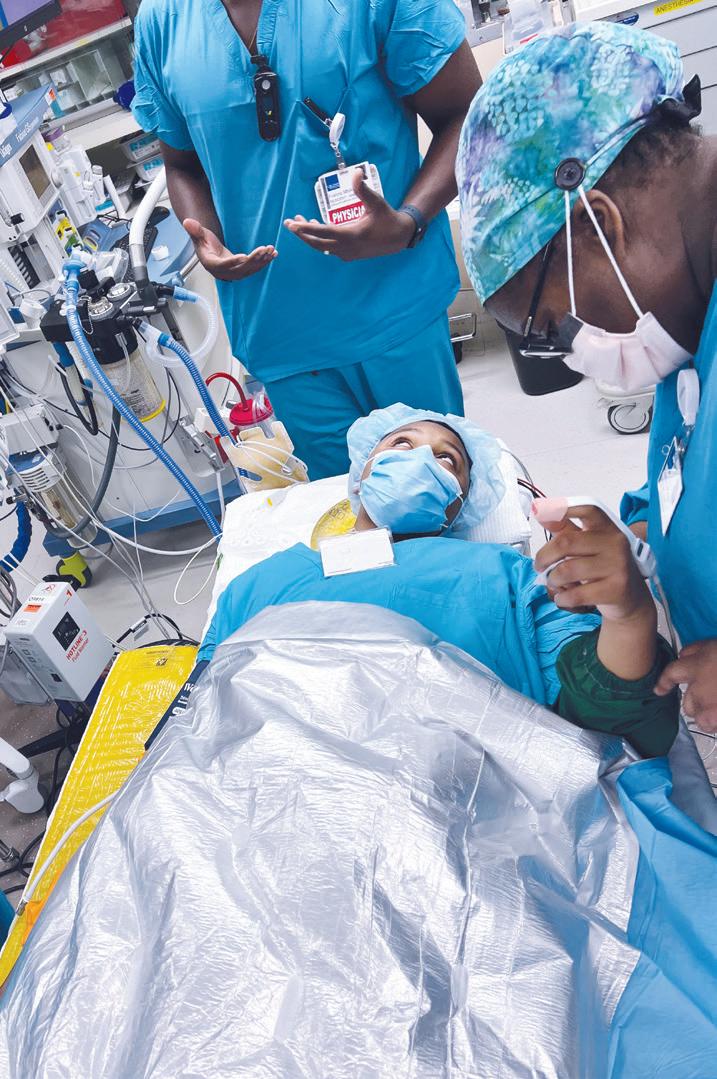
The service reported, “The passing of Pope Francis came the day after Easter, when he was able to offer the city and
Virginia Mason Franciscan invests in nonprofit that educates, empowers minority
youth
By JULIE MINDA
As a consultant helping a group of high schools in northwest Washington state address the needs of at-risk students, Jimmy Brown saw several worrying trends about a decade ago: Numerous youth felt they had no trusted adults to turn to, they felt disconnected and they felt they had no voice nor control in their lives.
When the pandemic severely curtailed his consultancy work even as the trends he saw worsened, Brown in 2020 used what he’d learned — plus additional research — to establish the Build 2 Lead nonprofit, which has a mission to “empower, engage and educate young people.” The
‘A sacred place’ Nebraska hospital opens waiting room for families of organ donors
By VALERIE SCHREMP HAHN
Four years ago, after their mother suffered a massive stroke with no hope of recovery, Jill Kloke and her sister knew that their mother would want to be an organ donor.

But over the two-day wait at a Texas hospital for her mother to be declared brain dead, Kloke and other family members had to find corners inside the hospital to have private, emotional conversations and to make arrangements. Kloke remembers making phone calls from a bathroom.
“We didn’t have a place designated just for our family going through this trauma, and not really having a sacred place to talk,” said Kloke. “We were just in this open lobby, and we couldn’t be together as a family.” Kloke is a registered nurse and patient safety manager at CHI Health Creighton University Medical Center — Bergan Mercy in Omaha, Nebraska, which in November opened a special waiting room for families of organ donors.
Catholic teachings remain guideposts for CHA, members even as federal environmental policies change
By LISA EISENHAUER
Ali Santore points with pride to the fact that more than 100 of Providence St. Joseph Health’s facilities — including its headquarters in Renton, Washington, and many others across Washington, Oregon and Texas — operate on 100% renewable energy.
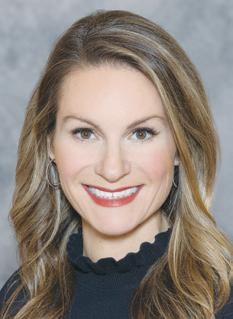
Santore, Providence’s chief communication and external affairs officer, says the health care system’s continuing move away from energy generated by fossil fuels — known to create pollution and deplete natural resources — is part of a comprehensive effort rooted in Catholic social teaching to protect the environment and address climate change.
Providence is unwavering in its sustainability push, she says, even as the Trump administration begins to roll back environmental protections.
“This continues to be a major commitment and area of focus for us, especially coming up on the 10-year anniversary of Pope Francis’ encyclical Laudato Si’,” Santore says.
Many other Catholic institutions and organizations have made similar pledges to pursue sustainability. They point to Catholic teachings and Laudato Si’ in particular as guideposts. Laudato Si’ is a call to action issued by the pope in 2015. It urges Catholics to care for the planet and all its inhabitants, especially the most vulnerable and marginalized.
Policies of concern
Kayla Jacobs is a program manager at Catholic Climate Covenant, a nonprofit that works to inspire and educate Catholics to act on Laudato Si’. CHA and many other
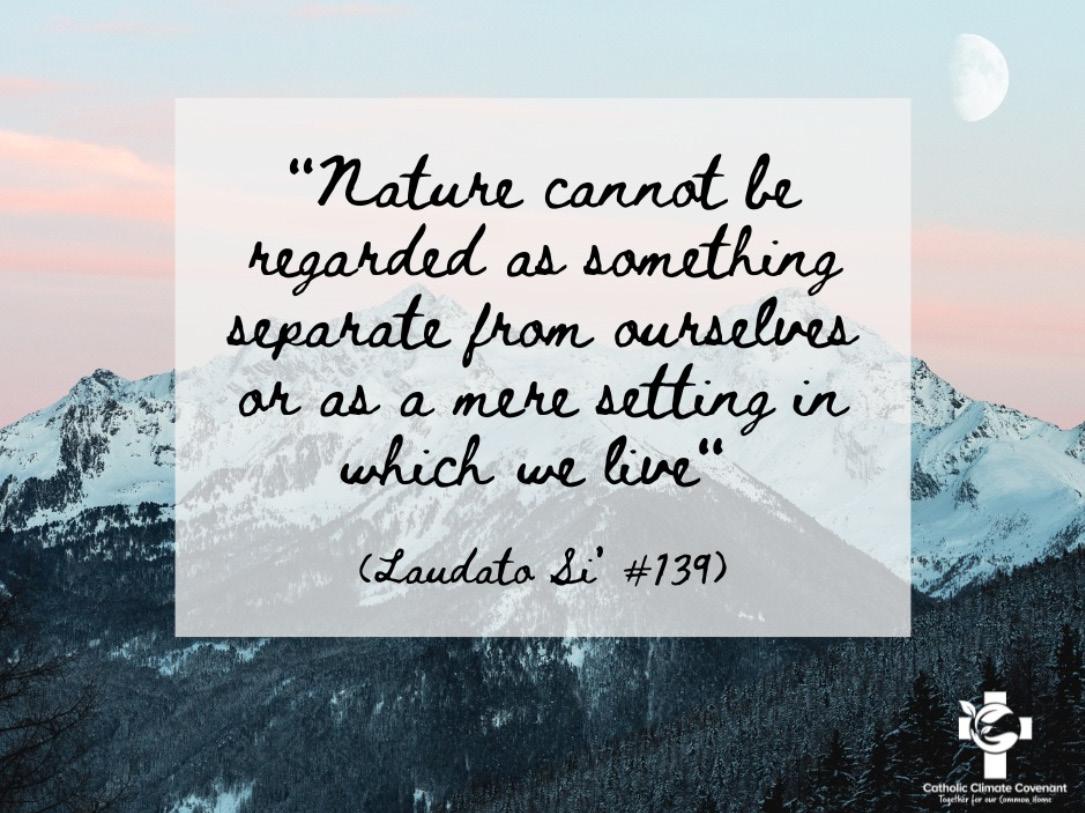
Catholic organizations are partners in the covenant’s efforts.
Jacobs notes that caring for the planet is one of the seven guiding principles of Catholic social teaching.
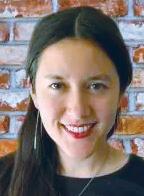
Catholic Climate Covenant opposes policies being advanced by the Trump administration that the organization sees as undermining environmental protections. The policies of high concern include:
Withdrawing from the Paris Agreement, a pact in which the United States joined other nations in efforts to mitigate climate change but that the administration says is among international agreements that “do not reflect our country’s values or our contributions to the pursuit of economic and environmental objectives”
Declaring a national energy emergency, a move the administration says will improve “economic and national security,” but that Catholic Climate Covenant warns could lead to environmental degradation by expanding the use of fossil fuels rather than encouraging the transition to renewable energy sources
Rescinding environmental justice initiatives, which President Donald Trump called “environmental extremism,” but the covenant says address the disproportionate
impact of environmental harm on marginalized communities
104 environmental regulations and succeeded in curtailing 84. The Biden administration had reversed many of those policies.
“This is basically a reprise of what we saw during the first Trump administration, with a big difference being that it’s moving much more rapidly, much earlier in the administration,” Landrigan says.
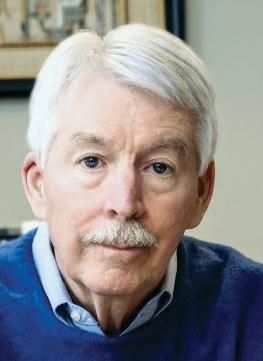
He sees the Catholic Church and its institutions as being poised to push back on the administration’s deregulation plans. He notes that in announcing the administration’s agenda in March, Environmental Protection Agency Administrator Lee Zeldin portrayed the policies as freeing American industry from unnecessary shackles.
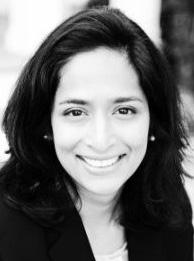
Indu Spugnardi, CHA’s senior director of community health and eldercare, says Catholic health care providers have shown strong support for protecting creation “by taking leadership in making environmental sustainability a strategic and mission priority.”
She notes that changes planned by the administration haven’t been made yet. “I think this is an opportunity for the health care field, the faith community, to say, ‘Hey, look, please remember that these rules were put into place because there was so much scientific evidence that (environmental degradation) hurts people’s health,’” says Spugnardi.
New term, same playbook
“He said not a word about the impacts of these rollbacks on human health,” Landrigan says. “And I think the Catholic Church is in a splendid position to present the opposite narrative, and that is to say that rolling back these protections exposes all Americans — and especially the poorest, the most vulnerable among us — to environmental hazards that are going to cause disease and death.”
Payoffs
Scan to read an extended version of this story.
Dr. Philip J. Landrigan, a biology professor at Boston College and director of the Catholic university’s Program for Global Public Health and the Common Good and its Global Observatory on Planetary Health, has a less optimistic view of prospects for changing the direction of the current administration. He says in Trump’s first term, the administration tried to roll back
Santore says Providence’s environmental strategy has paid off not only by reducing the system’s impact on the planet but also by improving its bottom line. “As of 2023, we are tracking a savings of $40 million annually from environmental stewardship efforts,” she notes. She says the system expects to see big payoffs for the communities it serves, too, as it incorporates environmental considerations into its community health needs assessments. The system is identifying “communities of concern” that could be most vulnerable to significant climate events, such as wildfires and drought. Once those populations are identified, Providence is focusing on ways to build up their resilience and create emergency plans for them.
“I think that we in Catholic health care should view our current external environment as a call to action,” Santore says. leisenhauer@chausa.org
Amid deportation surge, ethicist makes case for protecting immigrants
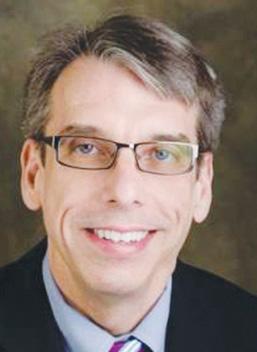
President Donald Trump’s second term is ushering in an era of fear and danger for many immigrants. With the administration deporting people at a rapid clip, undocumented immigrants and people with temporary authorization to be in the country are worried they will be swept up in the administration’s mass deportation efforts. Many are afraid to leave their homes and some are avoiding areas that used to be protected locations but may no longer be: health care facilities, schools and churches.
ical ethics and director of the Neiswanger Institute for Bioethics and Health Policy at Loyola Chicago.
“The media narrative says that there is a ‘migrant crisis,’ and that migration is a problem and an issue to be solved … and that migrants are different from ‘us,’” said Kuczewski. “In reality, they are a blessing. Is education and formation on this our highest duty? Can we use this as a teachable moment? Can we change hearts and minds?”
He said Catholic health care facilities should respond to the situation by remaining safe, trusted locations for immigrants. He said that at a bare minimum, health care facilities have a duty to respond to people’s medical needs. It is a violation of patient privacy protections for individual staff members to contact authorities on people they suspect are in the country illegally, he said.
He said that ministry facilities should update their nondiscrimination statements to include immigration status. And they should live out the heart of this statement by positioning themselves as an environment that embraces all people.
This is according to medical ethicist Mark G. Kuczewski of Loyola University Chicago, who told attendees of an April 2 CHA webinar that amid these changes, it is important for Catholic health care facilities to remain a welcoming, safe environment for these immigrants and to take steps to protect and support them. He said that working within the law, they should ensure they have policies in place to keep enforcement officers out of spaces they legally may be stopped from entering. These facilities also should educate employees about how to welcome the stranger and teach immigrants how to protect themselves.
Health care facilities also should work to change the prevailing narrative in the U.S. today, said Kuczewski. He is the Fr. Michael I. English, S.J., professor of medKuczewski
Kuczewski’s webinar, “Ethics, Immigration and Health Care” was part of the ongoing CHA series, “Emerging Topics in Catholic Health Care Ethics.”
Duty to respond
Between Jan. 20 and mid-March, the U.S. Immigration and Customs Enforcement department deported more than 28,000 immigrants, according to a March 19 Newsweek story, and had plans to continue ramping up the efforts.
During the Biden administration, certain “sensitive locations” including hospitals, schools and churches had been protected from immigration enforcement, but on Jan. 20, the Trump administration rescinded that protection. Kuczewski said that the changes had left immigrants fearful and stressed. He said some immigrants have been avoiding health care facilities for fear of deportation.
But Catholic social teaching challenges ministry providers to go beyond this basic level of protection, Kuczewski said. They should make immigrants feel welcome. They should recognize that undocumented people’s immigration status is a social determinant of health and so, as a matter of community and public health, protection of their health should be a priority for ministry sites.
Practical steps
Scan to read an extended version of this story.
Ministry facilities also should develop and educate employees on “front door” policies. Such policies should make clear that immigration enforcement officers may not go beyond publicly accessible areas like lobbies to seek out undocumented people. Only if these officers have a warrant or if there is an immediate public danger posed by the immigrant should they be allowed beyond public areas, he said.
Kuczewski said Catholic organizations, including CHA, are voicing their objections to Trump administration moves. CHA, the United States Conference of Catholic Bishops and Catholic Charities penned a letter opposing the removal of protected status for sensitive locations, including hospitals. Some churches have entered into a lawsuit to challenge the policy. Some Catholic facilities have endorsed legislation to protect undocumented immigrants.
Additionally, Catholic health facilities should find ways to reach out to and help educate and empower people at risk for deportation. This can include providing them with information on their rights, connecting them with reputable attorneys and educating them on how to protect themselves.
“Some of this has to do with how you form your employees — and some of you may have a tall order,” Kuczewski said. “You can remind them of our values as Catholic health care facilities, and you can remove the barriers to trying to live up to those values.”
Sr. Lilian Bernard Lynch was on FMOLHS board
Sr. Lilian Bernard Lynch, a member of the Franciscan Missionaries of Our Lady congregation who served board leadership roles with Franciscan Missionaries of Our Lady Health System and Our Lady of the Lake Regional Medical Center, died April 3 at the age of 88.
Sr. Lynch had served on the FMOLHS Board of Trustees from January 2016 to May 2022, where she held the position of secretary. She was on the Our Lady of the Lake Board of Directors from January 2012 to December 2015. She was an original mem-
Build 2 Lead program
From page 1
organization’s staff of six runs programming that helps youth do well in school; learn about and pursue promising career paths; network with people who can assist them in attaining their goals; become knowledgeable about how to navigate the education, health care and criminal justice systems; and advocate for themselves and their communities.
The focus is on youth of color or those who are from marginalized populations.
Since about 2022, Tacoma, Washingtonbased Virginia Mason Franciscan Health has been one of Build 2 Lead’s most involved supporters. That 10-hospital system has been helping to fund Build 2 Lead’s programming. Also, Virginia Mason Franciscan’s leaders have been advising Build 2 Lead, taking part in career fairs and serving as mentors for Build 2 Lead’s clients. And some of the system’s facilities have hosted field trips for Build 2 Lead participants. Virginia Mason Franciscan also has connected Build 2 Lead to key players in the More in Common Alliance, which is a national partnership between Morehouse School of Medicine and CommonSpirit Health to increase the representation of people of color in medicine. Virginia Mason Franciscan is part of CommonSpirit.
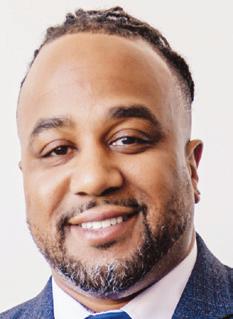
The Build 2 Lead — Virginia Mason Franciscan partnership “shows that larger health care organizations can really build strategic pathways with smaller community organizations, lean in on what’s going well and have the ability to create innovative solutions,” says Brown. “We are showing that we can empower students, dismantle harmful systems in a positive way and create equity for all. This is a blueprint for small organizations like ours to think big.”
Youth empowerment
Over the past five years, Build 2 Lead has used grant funding from Virginia Mason Franciscan as well as city and state dollars and philanthropic contributions to develop a robust set of offerings for elementary, middle and high school students. Many of the schools are in communities in Washington state where Virginia Mason Franciscan has facilities.
Build 2 Lead programs include career fairs, conferences, workshops and training and mentoring programs around health care and other careers. The organization also offers programs on entrepreneurship, financial literacy, college and career planning and leadership. And it offers community outreach and advocacy events.
According to Brown, Build 2 Lead is seeking to change systems that have harmed marginalized communities, address health disparities and inequities, and counter structural racism. “A goal is to impact systems that are having the most negative impacts on our communities,” including health care, education and criminal justice, says Brown.
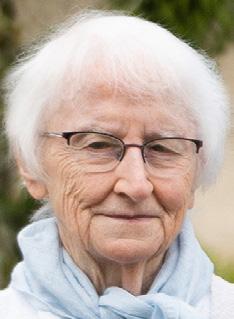
Sr. Lynch
ber of the system’s public juridic person, Franciscan Calais Ministries, from its inception in September 2018 until May 2022.
Sr. Lynch began working at Our Lady of the Lake hospital in Baton Rouge, Louisiana, in 1962. She was supervisor of the Eye, Ear, Nose and Throat Department. In that position, she helped found the Baton Rouge Regional Eye Bank, a nonprofit that supplies tissues for use in restoring sight.
Her commitment also included terms on the Provincial Council of the North American Province of Franciscan Missionaries of Our Lady.
Pete Guarisco Jr., senior vice president,
Build 2 Lead programs
Among the programs that the Build 2 Lead nonprofit offers are:
The POWER Council and POWER Conference. POWER stands for Prosperity, Ownership, Wellness, Empowerment and Resiliency. Build 2 Lead works with local communities through this council to develop a shared agenda and solutions to improve community health and economic opportunities and to build strong community connections, including at council-hosted conferences. The POWER Council uses the raised fist Black power symbol in its logo to reference its goal of empowering people.
The annual Melanin and Medicine Event at a local high school.
Representatives from Virginia Mason Franciscan Health, the More in Common Alliance and other health care organizations take part in workshops and a career fair to make high school students aware of the many careers in health care and how to pursue them. The event is part of the B2L Legacy series of in-person events that help connect minority students with people who can help them succeed.
B2L Direct. The nonprofit works directly with students and educators in schools and youth spaces, teaching about social and emotional learning, advocacy, active listening and facilitation skills, and healthy coping strategies.
— JULIE MINDA
‘Phenomenal partner’
Virginia Mason Franciscan’s involvement with Build 2 Lead came about around 2021 when Najmah Messiah, a radiology support services manager with a Virginia Mason Franciscan facility, became aware of the organization. She became heavily involved due to her passion for building the pipeline of minority students pursuing health care careers, says Brown. She has been involving her health system’s leadership in the organization, providing input to Build 2 Lead on evolving its programming, and helping to coordinate Virginia Mason Franciscan’s various types of support. She now works with the More in Common Alliance.
Virginia Mason Franciscan has found that its support not only greatly benefits Build 2 Lead and its participants, but also advances priorities of the health system. This includes developing and filling a pipeline of potential candidates for health care jobs and improving health care outcomes for marginalized populations.
In a release about the partnership, Michael Cox, chief mission officer of Virginia Mason Franciscan and of CommonSpirit’s northwest region, says Build 2 Lead is “a phenomenal partner.” He says the organization is “aligned in advancing our mission, our values and helping us achieve our vision for better health and a more equitable health care system for all of our communities, especially those who are vulnerable.”
mission integration for the health system, had known Sr. Lynch for about 25 years and said she was a soft-spoken, petite woman.
“Her presence was oftentimes a silent presence,” he said. “When she spoke, the room stopped and listened, because it was always very philosophical and practical at the same time. I think that’s a gift that a lot of people just don’t possess, to be able to be connected, but also very practical.”
He said anytime anyone asked Sr. Lynch to pray for them, she responded: “You can count on it. I’m going to say three Hail Marys for you.”
Services for Sr. Lynch were April 7 at St. Francis Chapel on the campus of the Franciscan Missionaries of Our Lady Maryville Convent in Baton Rouge.
In the same release, Doug BaxterJenkins says the partnership is increasing representation of people of color in health care, and “when our facilities reflect the communities we serve, better care is provided and better outcomes are seen.” Baxter-Jenkins is regional program director for community health at Virginia Mason Franciscan.
Life-changer
Build 2 Lead has served nearly 2,000 people since its inception, and the staff is working to increase its slate of offerings.
Brown anticipates there could be challenges to this growth. “The climate is hard now when it comes to serving the underserved,” he says. “Some feel the need to take their diversity, equity and inclusion work underground. There is a fear of the unknown for those of us doing this work. But we don’t want to miss the opportunity to help those who are reeling from the problems they are having.”
He adds, “We are trying to elevate the conversation. We will continue to do this work, but the political shift could make it harder to thrive.”
Dairyona Thompson is an assistant program manager for Build 2 Lead and Natorius Ezell is a program manager. They say it is vital that the organization’s work continues because it is serving northwestern Washington’s most vulnerable communities and having a real impact.
Ezell says many of the young people the program serves come from very lowincome households. Many of the kids are so hungry that they wolf down the snacks that Build 2 Lead provides. Many are tired at school because they must take care of siblings overnight while their parents work. Some have been abused or neglected. Many of the kids already have become caught up in the criminal justice system. Thompson says many of the kids are not on track to graduate, until Build 2 Lead steps in. Many of them don’t know how to pursue school and career pathways to success, she says.
Ezell says, “We want to interrupt the prison pipeline. We are helping them connect the dots on how generational things are passed down. We want to help them break the cycle and close the gaps.”
He acknowledges, “It is sometimes hard to see when kids who love their families but see the mistakes their parents have made — they want to do better. We see these ‘aha’ and ‘wake-up’ moments.”
He says after the Build 2 Lead participants learn how to set and pursue their goals, “we see the kids going into these avenues because we’ve exposed them to them. They’re on fire.”
Thompson says a big part of Build 2 Lead’s work is to help students counter the barriers they face and advocate for themselves. “We open doors they normally don’t have the opportunity to open,” she says.
She adds, “Some of the decisions they are making are life and death for some of them. For some of them, Build 2 Lead is all they have. We are saving lives, and this is really important — it can be life-changing for them and their families.” jminda@chausa.org
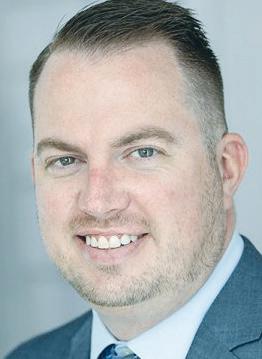
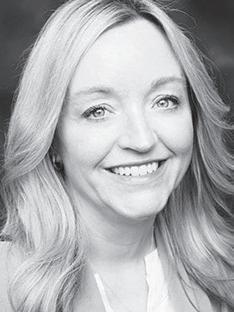
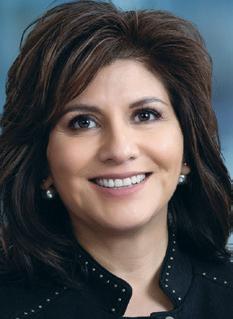
PRESIDENTS/CEOS
Derek Drake to president of Mercy Hospital of Buffalo, New York, effective in July. Mercy Hospital is part of Buffalo-based Catholic Health. Drake was CEO of Orange County Global Medical Center in Santa Ana, California.
Victoria Hanson to regional president and CEO of Avera Sacred Heart Hospital of Yankton, South Dakota. She was vice chair of administration for the Southwest Minnesota Region of Mayo Clinic Health System.
Gregory LaFrancois to senior vice president of Andover, Massachusetts-based Covenant Health and president of Covenant’s St. Joseph Healthcare in Bangor, Maine. He was president of Northern Light Eastern Maine Medical Center. He succeeds Mary Prybylo, who is retiring.
Pierre Monice to president and CEO of Trinity Health’s Holy Cross Health in Fort Lauderdale, Florida. He was president of Loyola Medicine’s MacNeal Hospital in Berwyn, Illinois.
Lillian Montoya to senior vice president for the New Mexico region of CHRISTUS Health. Montoya will remain president and CEO of CHRISTUS St. Vincent Health System of Santa Fe.
ADMINISTRATIVE CHANGES
Sam Bajaj to chief operating officer of Providence Clinical Network, part of Providence St. Joseph Health.
Travis Francis to hospital administrator for Ascension Via Christi Rehabilitation Hospital in Wichita, Kansas.
Trinity Health Mid-Atlantic names new regional leadership team
Trinity Health Mid-Atlantic, based in Southeastern Pennsylvania, and Holy Cross Health, based in Maryland, recently announced a new regional ministry leadership structure to integrate Trinity Health Mid-Atlantic and Holy Cross Health into one unified regional health ministry. The strategic alignment will help strengthen operations, enhance clinical programs, improve access and drive service line growth, according to a press release.
Leaders on the new Trinity Health MidAtlantic regional leadership team include: Kyle Anthony, regional director, integrity, and compliance officer
Dr. Sharon Carney, regional vice president and chief clinical officer
Gary Edwards, regional mission leader
Paul Junod, regional vice president and chief human resources officer
Marlow Levy , president, Mercy Fitzgerald Hospital in Darby, Pennsylvania, and Saint Francis Hospital, Wilmington, Delaware
Dr. Michael Magro Jr., president, St. Mary Medical Center, Langhorne, Pennsylvania, and Nazareth Hospital, Philadelphia
Dr. William Melms, president, Trinity Health Mid-Atlantic Medical Group
Catherine Mikus, regional vice president and managing counsel
Dr. Rhonique Shields, chief medical officer, Maryland Medical Group
Alisa Smallwood , regional chief development officer
CHA and AHA release analysis on ways nonprofit hospitals benefit communities
By JULIE MINDA
CHA and the American Hospital Association have released an analysis of the many and varied ways that nonprofit hospitals benefit their communities, as reported to the Internal Revenue Service in Form 990 Schedule H. The organizations’ report is “Nonprofit Hospital Community Benefits: Addressing Each Community’s Unique Needs.”
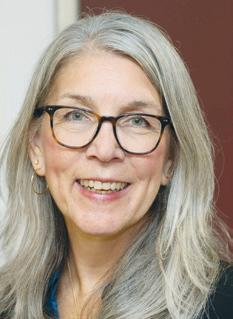
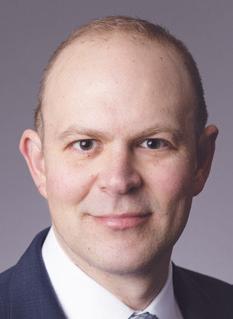
According to community benefit experts with CHA and AHA, it is important for policymakers, researchers and others to have a full understanding of hospitals’ community benefit activity. Those experts, Nancy Zuech Lim and Aaron Wesolowski, say people should recognize that hospitals’ community benefit work includes a wide-ranging spectrum of activities — not just one or two. The characteristics of different hospitals’ community benefit work vary greatly from facility to facility because communities have different characteristics and needs. The 12-page report examines these concepts as they relate to community benefits reported on IRS Form 990 Schedule H. Lim, CHA director of community health improvement, and Wesolowski, AHA vice president of research strategy and policy communications, helped develop the report.
Wesolowski says the report illustrates why “it’s really important to focus on the whole array of benefits. It’s important for policymakers and others to understand that one size does not fit all.”
Lim adds that the report highlights “the good work of hospitals and their critical role in communities — they are seeking to improve how well and how long people live.”
Eight categories
Most U.S. community hospitals are nonprofit. To qualify for tax-exempt status under the Internal Revenue Service’s code, these hospitals must demonstrate that they provide broad community benefits. They report these benefits on IRS Form 990 Schedule H. In Part I of Schedule H, hospitals report how they benefit their community across eight different categories. For each category, community benefit is reported at cost to the hospital, net of offsetting revenue.
The categories are:
Financial assistance or charity care
Medicaid shortfall
Other means-tested government programs
Community health improvement services
Health professions education
Subsidized health services
Research
Cash and in-kind contributions to community groups
The CHA and AHA analysis explains the
iary of Buenos Aires and continued to rise in the church’s ranks, becoming a cardinal in 2001.
meaning of the reports and how Schedule H tells a broad story about hospitals’ impact on their communities. CHA and AHA played pivotal roles in the IRS’ development of Schedule H.
The recently released analysis notes, “recent discussions of nonprofit hospitals and their tax-exempt status have focused on concerns regarding specific measures of benefits while ignoring others in a way that misrepresents the extent of the community benefits provided.”
The analysis says there are numerous ways nonprofit hospitals positively impact their communities and that hospitals tailor their community benefit work to the communities’ evolving needs. The analysis also says that the characteristics of benefit work vary by hospitals’ function and patient profile. For instance, teaching hospitals, children’s hospitals, rural sites, urban sites and sole provider facilities each provide distinct types of community benefit programming.
Nonprofit hospitals develop their community benefit programming through thorough assessments of their communities’ health needs. These learnings are documented in their community health needs assessment reports, and their plans for addressing those needs are documented in their implementation strategies. The hospitals make these documents available to the public.
Rich data
Lim and Wesolowski say the CHA and AHA analysis shows that Schedule H can
Inspiration and impact
the world his final apostolic blessing and embrace the faithful once more.”
‘Forever grateful’
CHA and numerous Catholic health systems and facilities are celebrating the life and legacy of the 266th pope of the Catholic Church, who had begun his papacy in March 2013, succeeding Pope Benedict XVI.
CHA President and CEO Sr. Mary Haddad, RSM, said: “Pope Francis witnessed Christ’s love and mercy to all people, particularly those at the margins of society.” She recalled how he memorably described the church as a field hospital, and that he called upon people to “heal the wounds of our world through love and charity.”
Sr. Mary honored the pope’s “unwavering advocacy for ethical care for all,” and noted his strong voice for the vulnerable during the COVID-19 pandemic and for all marginalized people around the world who were harmed by disease and natural disasters.
“Pope Francis always led with compassion, inclusivity, and humility,” she said.
She noted that the pontiff’s simplicity and sense of humor added to his approachability and made him accessible to all people. He truly was the “People’s Pope,” she said.
“Pope Francis leaves a legacy for all of us to emulate and for which we are forever grateful,” she said.
Culture of encounter
The “first Pope of the Americas,” the pontiff was born in Buenos Aires, Argentina. His given name was Jorge Mario Bergoglio. He graduated as a chemical technician before deciding to enter seminary to become a priest. After concurrently receiving a degree in philosophy, he taught college and also earned a theology degree. He was ordained a priest in 1969 and made his final profession as a Jesuit in 1973. In the ensuing years, he continued teaching, headed a Jesuit province in Argentina, served as a parish priest and earned a doctorate. In 1992 he became titular bishop of Auca and auxil-
CHA has created a tribute page honoring some of the fruits of Pope Francis’ papacy that had the most meaning for the Catholic health ministry. Among the resources are some related to the pope’s focus on the culture of encounter, a culture that he said “is everybody’s responsibility.”
The page also includes links to the pope’s 2015 encyclical, Laudato Si’, which delved into how all of creation is bound together and people are responsible to care for one another and creation. That seminal document has inspired extensive work throughout the Catholic health ministry and beyond to advance environmental stewardship.
CHA’s tribute page also contains resources related to the pope’s call for people to advance human flourishing and to promote the common good. Resources linked to that section of CHA’s tribute page include an October 2020 papal letter on fraternity and social friendship. In that letter, the pontiff called for unity amid the division that was rampant in society around that time.
CommonSpirit Health praised the “significant impact” Pope Francis made during his papacy. The system’s statement added that the pope’s beliefs are reflected in the mission and values of CommonSpirit. “We strive to embody his call to accompaniment; to be with people on their journey through life,” it said. “We are profoundly grateful for Pope Francis’ focus on serving poor and marginalized communities, which has deeply inspired our own work.”
In a social media post, Ascension said that “as a Catholic health ministry, we remain committed to the healing ministry of Jesus and to carrying forward the values Pope Francis championed — kindness, justice and care for the most vulnerable among us and all of God’s creation.”
Ascension CEO Joseph Impicciche wrote in his own post: “We remain deeply committed to carrying forward the values he championed. May his memory be a blessing, and his example a lasting source of guidance and inspiration for us all.”
Providence St. Joseph Health President and CEO Erik Wexler also commented on social media, noting that the pope “will be remembered for numerous contributions,
provide a great deal of valuable information and insights about how hospitals serve their communities and the context of their community benefit work.
For instance, says Wesolowski, “what struck us was how closely related the financial assistance and Medicaid shortfall categories were.” The analysis showed that hospitals in states that expanded Medicaid had higher levels of Medicaid shortfall to claim, whereas hospitals in states that did not expand Medicaid had higher levels of financial assistance or charity care to claim. That is likely because those hospitals treated more uninsured people, and those people likely had difficulty paying for their care and required charity assistance.
Wesolowski says that the IRS database of information that nonprofit hospitals report on Schedule H is a trove of rich data. CHA and AHA likely will continue to delve into the data and release additional reports to help people better understand nonprofit hospital community benefit.
Sr. Mary Haddad, RSM, CHA president and CEO, says that hospitals are more than places of healing. “They are lifelines to their communities. The care we provide for our patients and our neighbors extends beyond the walls of our facilities as we seek to meet people where they are.”
She says through their community benefit work, nonprofit hospitals “address pressing individual needs, advance community health, and expand access to programs that promote human flourishing — all contributing to the greater good.”
especially his outreach to those who are poor and vulnerable, advocacy for responding to climate change, and a deep commitment to health care.”
In a message to Providence colleagues shortly after the pontiff’s passing, Dougal Hewitt, Providence executive vice president and chief mission and sponsorship officer, wrote that Pope Francis exemplified the values that he — the pope — promoted, “especially our Providence values of compassion and justice. These values were evident in his focus on addressing climate change and his call to care for migrants and those living on the margins.”
Trinity Health President and CEO Mike Slubowski sent a message out to ministry associates shortly after the pontiff’s death. In the missive, Slubowski wrote that the pontiff “stood with immigrants and the most vulnerable, urging all of us to offer grace, not judgment. He showed the world that compassion is for everyone regardless of background, belief or circumstances.”
Slubowski wrote that Pope Francis’ “life and legacy are an inspiration to our mission of caring for others with love, dignity and justice.”
jminda@chausa.org
